After an exciting three-and-a-half years at Antler, joining the team as an early employee and working with hundreds of startups around the world, I recently stepped away to launch my own entrepreneurial venture. New Economies is your weekly newsletter serving up the latest technology trends transforming our world. Going forward, my articles, reports, and industry insights will live here.
New Economies is rooted in my experiences working in venture. We’re living in extraordinary times—the most exciting era ever for technology, with groundbreaking trends emerging constantly that will redefine how we live and work in the future.
I hope you will join me on this journey—subscribe to New Economies to stay ahead of the curve in technology. We’re just getting started!
Three years ago, when I published the first ultimate guide on the creator economy, the category was booming at an unprecedented speed of growth. In 2021, there was a rise in platforms allowing creators to monetize, partly driven by the COVID-19 pandemic prompting thousands to find alternate ways to make an income. To benchmark the success of creator economy companies in 2021, a record 11 companies reached unicorn status that year.
In 2022, the creator economy charted new territory and entered Web3, with a surge of more transparent creator-to-fan platforms handing more power to the creator. A number of platforms pivoted or launched services that enabled creators to issue NFTs, tokens, or crypto-related assets, which we mapped in the 2022 report.
In 2023, the creator economy shifted once again with the rise of Generative AI (Gen AI) tools, paired with the growing focus on community, as highlighted in last year’s report. The dominance of AI and community has persisted throughout 2024. Will the same trend continue in 2025?
Welcome to our 2025 Creator Economy Report, the fourth annual in-depth analysis of one of the most exciting sectors, including: key trends for the year ahead, the impact of AI, challenges and opportunities for creators to keep top of mind, the evolution of the startup landscape, and the big question on many minds—where will the creator economy go next?
In this year's edition, you will discover:
Chapter 1: What is the creator economy?
Chapter 2: The creator landscape today.
Chapter 3: The 180+ creator startups to watch.
Chapter 4: The fundraising and unicorn landscape.
Chapter 5: AI: The big creator game-changer.
Chapter 6: Challenges for creators in 2025.
Chapter 7: The new creator economy: 2025 trends.
Chapter 8: The top ways creators can thrive in 2025.
Chapter 9: Is the creator economy here to stay?
This year’s edition is brought to you by Linktree, Mighty Networks, Everbloom, and KLIQ. A big thank you for powering this report.
Chapter 1: What is the creator economy?
The creator economy is the widely growing ecosystem of over 200 million creators who are monetizing their individuality in myriad ways. These creators range from people producing content on platforms like Instagram, Meta, OnlyFans, TikTok, Twitch, and X to those launching paid communities or courses on platforms like Mighty Networks and KLIQ. Creators also choose to monetize their passions by building communities, while others focus on niche hobbies like creating Japanese art or crafting Turkish pottery.
In just a few years, the number of creators has surged from 50 million to 200 million-plus worldwide—and it's expected to keep growing with 70% of Gen Z aiming to become creators as their preferred career choice. The creator market size is expected to double by 2027. Anyone can become a creator, and if you haven't already tried, there has never been a better time to give it a go.
Chapter 2: The creator landscape
In recent years, the creator economy has experienced its share of highs and lows—including its peak during the COVID-19 pandemic and lows like widespread creator burnout, platforms taking large take rates from creators, and a new challenge that’s now top of mind for many: how can AI safeguard content? Amidst those pressing questions and challenges, the focus for creators is clear as we head towards 2025 and beyond: AI, community, and diversifying revenue streams.
These three big themes are fueling big growth.
The number of people becoming creators continues to hit new highs. We believe that in the future, most of us will take on the role of creators—whether as a full-time career or alongside our day-to-day jobs. It’s rapidly becoming the career of choice for many Gen Zers, who prioritize financial independence and entrepreneurial ambition. As we explored in a recent newsletter on how Gen Z is shaping the future, this generation is redefining career paths and influencing the next wave of creators.
“As we go into 2025, I see a trend where creators can create the equivalent of their own TV channels. Meaning creators have the ability to offer the same as a TV channel does. We have an audience that a lot of TV channels wish they had. As creators we can command proper payment for our work but also be the creator, agency, and broadcaster for brands if we wish to.’’
—Simon Squibb, creator.
What’s changed in the last 12 months?
Over the past 12 months, the creator economy has evolved significantly with AI impacting nearly every creator. Creators can now reach a global audience from day one by translating their content into any language using their own voice. A new wave of AI-driven video platforms allows creators to edit their videos into bite-sized clips in minutes, rather than the days it used to take.
In the last report 18 months ago, we predicted creators would become global from day one. This has now become a reality. A year and half ago only 33% of creators were using Gen AI tools. Fast forward to today—a recent report by YouTube reveals 92% of creators are now using Gen AI-related tools with 90% of creators feeling they are not using Gen AI to the fullest extent possible.
Here are more examples of how the creator economy has adapted over the last 12 months:
Fewer startups are building in the creator economy.
This year, we've seen a noticeable decline in the number of new startups building for creators. In contrast to the hundreds of startups that emerged in our previous three editions, this year's count is significantly lower.
Why the slowdown? Startups raised too much capital too quickly.
That being said, a larger percentage of startups featured in the last report are still operational versus those featured over the past three years. Does this suggest there’s still untapped innovation and opportunities in the creator space? Absolutely—if you prioritize supporting creators with discoverability and revenue generating opportunities.
“Consolidation, mostly by elimination rather than by acquisition. Many startups have and will shut down, which is a good thing! There were way too many. Those that persist and survive will find themselves in a much healthier environment—less competition, more opportunity.”
–Gagan Biyani, co-founder of Maven.
Creators gained presidential attention.
The creator economy even made its way to The White House. The White House’s Office of Digital Strategy hosted its first-ever creator economy event in August, convening 100 digital creators, startups, platforms, and influencers to discuss pressing issues within the creator economy today—from privacy and fair pay to AI and mental health.
The appeal of alternate information sources is growing.
We’ve seen a huge rise in newsletter writers over the last 12 months. This year’s Edelman Trust Barometer revealed mistrust in journalists is increasing, with 64% of respondents worrying they are purposely trying to mislead people. At the same time, 74% of people trust “someone like me” to tell the truth, on par with scientists. Given today’s environment of mistrust and misinformation, we expect many consumers will continue to be more discerning about who they consume information from and who can be trusted sources of information. Their search for alternate and independent sources will fuel the popularity of newsletters going forward.
“More and more consumers are looking to learn and take information directly from who they consider an expert. There’s never been a better time to create content and educate your audience on your niche knowledge.’’
–Ben Camara, founder of KLIQ.
Creators can go from content production to global distribution in a breeze.
As the originator of the link-in-bio category with a community of over 50 million users, Linktree is the top tool creators and businesses use to curate, grow, and monetize their audience. In August they acquired Plann, a social media scheduling platform. Adding social scheduling to Linktree will make it even easier for busy creators juggling producing content and multiple ventures to distribute inspiring content.
Creators are becoming businesses themselves.
We’ve seen a much larger number of creators over the last 12 months become businesses themselves, launching new brands and figuring out new ways to diversify revenue streams on platforms such as KLIQ. As content creators emerge and develop, they will need to diversify their revenue streams instead of relying on fewer revenue earners. We expect more creators to launch their own product lines and to potentially become software founders themselves. We also anticipate more creators to partner with platforms like Everbloom who help YouTubers level up their channels with upfront funding.
“Platforms need to adopt a creator-first mindset, focusing on empowering creators with the tools they need to take full control of their content, data, and monetization. It’s not enough to provide a space for creators. Equally important is addressing the mental well-being of creators and users. The prevalence of negativity and trolling on social platforms not only impacts individuals but also distracts from the overall experience. Finally, refining algorithms to support organic audience growth is crucial. Creators need fair systems that help them expand their reach.’’
—Amrapali Gan, former CEO at OnlyFans.
Chapter 3: The 180+ creator startups to watch
To help navigate this evolving landscape, we created a market map that highlights 180+ early-stage startups supporting the creator economy, organized in three categories:
Gen AI tools.
Tools that help creators grow and flourish across community, monetization, and everyday support.
Vertical platforms such as gaming and music startups.
Disclaimers:
The startups have been listed based on how they describe themselves on their external websites.
The startups were selected based on our data room (including 5,000+ startups and 2,000 investors, investor and founder recommendations, and market research).
Creator economy startup hot spots.
With hundreds of startups now building, where are they based?
Drilling down on the startups in our market map, the U.S. continues to be the go-to country to launch a startup within the creator economy followed by the U.K. and Israel.
What’s driving this? Most of the notable creator economy platforms are based in the U.S. since a huge number of the most influential creators are living there too, along with most of the investors investing in the category and most of the talent that works for creator-focused platforms and startups.
Chapter 4: The unicorn and fundraising landscape
Although the number of creator-based startups has reduced this year, we have seen a few new unicorns, most of which are AI related. For example, the dubbing software company ElevenLabs was one of the first platforms to reach unicorn status in January 2024 with their $80 million in fresh funding.
Here are some noteworthy data points about the unicorns listed in the infographic below:
The number of creator economy unicorns reached 11 in 2020.
Since 2020, 13 new unicorns have emerged, including: Clubhouse, MasterClass, Cameo, OpenSea, Axie Infinity, Spotter, Linktree, Domestika, Jasper, Runway, Anthropic, ElevenLabs, and OpenAI.
95% of creator-based unicorn platforms are based in the U.S.
46% of the new creator unicorns are AI-based platforms.
The latest trends in creator economy fundraising.
In the first half of 2024, creator economy startups in the U.S. raised roughly as much money as they did in all of 2023, according to The Information.
In the second quarter alone, U.S. creator startups raised $692.7 million, up 68% from a year earlier and more than double the amount raised in the first quarter. Globally, creator startups raised approximately $767.9 million during the period, an increase of roughly 49% year over year.
In the third quarter, funding for U.S. creator economy startups fell nearly 16% year-over-year to $253.1 million.
Investment levels remain far from their peak three years ago. Still, the rebound reflects venture capitalists’ confidence that startups can take advantage of Generative AI to develop the tools and services creators want.
Who’s investing and what are investors expecting next?
Chapter 5: AI—the big creator game-changer
Over the past two years, AI has had a conspicuous ripple effect, not just for creators but across the entire tech ecosystem. Thirty percent of all venture funding at present each quarter is going into AI startups as we reported in our recent article on the 2024 Generative AI Landscape.
Our conversations with investors and creators made it abundantly clear: AI is here to stay and creators need to learn and understand how they can use this growing battalion of tools to help them scale, automate tasks, and make their creativity even better. At the same time, creators have a number of understandable concerns, including: AI tools using creators' content, which may end up being replicated elsewhere; creators and their voices being replicated for unauthorized content; and creators learning to become AI experts given how fast the category is changing.
“I’m using AI across my businesses to make workflows easier for my teams, which lets me dive deeper into my creative side! The potential for AI to enhance creativity is really exciting. It helps with ideation and testing out new ideas faster, giving creators the chance to push their limits and explore fresh concepts. Of course, it’s important for us to strike a balance—using AI to support our work rather than letting it take over.”
—Julius Dein, creator.
How creators are leveraging AI
Four big areas of leverage jump out at us.
Instant globality. As reported in our past writing about the creator economy, until recently there were very few platforms that allowed creators to be global from day one. Platforms like ElevenLabs, Dubverse, and Murf now enable creators to do just that. Instead of creators only producing content in their native language, they can now upload their content and translate it into any language.
“The most exciting trend in the creator economy is the focus on Multi-Language Audio Tracks (MLA), which allow creators to change the language of their content to suit the preferences of their viewers. This has already helped some channels I work with increase views by over 400% per month.’’
—Mario Joos, creator.
Building a richer community. Community will always be part of creators’ DNA. The big challenge is: How can they build better relationships with their fans? Mighty Networks is one of the leading platforms and a go-to product for creators where, within a few minutes, they can have a platform set up for creators.
“Creators turn to AI to reply to fans at scale: Whether it's comments from a streamer's millions of adoring followers or DMs of tricky questions from an online educator's students, AI has the potential to let creators build relationships with their audience at scale. We'll increasingly see creators deploy chatbots trained on their advice videos, voice cloning for thanking fans by name for their support, and fully generated avatars fans can feel like they're FaceTiming.’’
–Josh Constine, venture partner at SignalFire.
Generating imagery and video. More creators are using text prompts to create images and videos. Platforms such as Runway and Midjourney are two of the most notable platforms in this category. By using these types of tools, creators are boosting their productivity. At the same time, some creators say these AI tools serve as a source of inspiration, giving them new ideas on the types of designs they can create in the future.
“I’m excited about the rise of AI. Honestly, ChatGPT has changed my life! It helps me a lot with the content creation process, and while I don’t use it to come up with all my ideas, it’s an amazing tool for brainstorming and organizing. At the end of the day, my scripts are still authentically mine, but having AI to assist is such a game-changer. The fact that AI is only going to get better means even more possibilities for us as creators.’’
—Jennifer Kassir, creator.
Being more productive. Creators run everything themselves most of the time—from payroll and HR to marketing, admin, operators, and design. As AI productivity tools within the AI space develop, platforms like OpenAI can support creators by being a co-pilot for brainstorming new ideas, identifying what an audience might want, and providing creators with ideas and strategies on how they can monetize their individuality, taking their business to the next level.
“AI is such a game-changer for us creators! I use AI tools that help keep me on track with my busy schedules. AI is helping me work smarter, so I can focus more on the creative and personal touch my audience loves.’’
–Nons Miraj, creator.
MrBeast is a prime example, with a channel that has historically been in English-only until recently. Now you can interact with his content in Spanish, Portuguese, and Russian.
Going into 2025, expect more creators to turn their content channels from local channels into global, multilingual channels.
With widespread adoption of AI tools over the last few years, creators want better protection on the tools they are using to ensure the platforms do not regenerate their work. Going into 2025, platforms need to be more transparent about how they will protect creators as this question remains top of mind for many.
“I know AI scares me now, but once I fiddle around with it, I hope it helps me.’’
—Haliey Welch, Hawk Tuah, creator.
Chapter 6: The new creator economy—the top eight trends in 2025
What’s in store for the creator economy in 2025? Here are the top eight trends we predict will define the sector next year.
Creators will become smarter in using AI.
With hundreds of platforms to choose from across the full creator stack, creators will need to educate themselves or learn from others on how to leverage AI. How do they train models on their tone of voice and the types of thumbnails that are most suitable for their fans? We expect platforms to provide better education to creators on how they can achieve this along with better transparency on how these AI tools are using creators’ content.
Creators will think of themselves as global players from day one.
Over the years we have repeatedly highlighted the massive impact of platforms allowing creators to turn their content into any language using their voice—long before these AI platforms became popular. This is now a reality and although they are not perfect, we expect the majority of creators to be thinking about global content distribution instead of being a local player. In the coming 12 months, we expect newsletter platforms to assist more creators in translating their written work into multiple languages to significantly expand their reach.
Take our newsletter New Economies as an example. Though our 56,000 subscribers are mostly consuming our content in English, there is growing demand for our content to be translated into Chinese, French, Hindi, Spanish, and Vietnamese. We are very excited to see how this trend evolves.
More expert creators are emerging.
With millions of creators around the world competing for eyeballs, a large number of incoming creators will focus on a specific niche going forward so they can build a highly engaged audience and aspire to become the best within their category.
‘‘I am very excited for the hyper niche creators emerging. To win as a creator in the future, you have to craft and own a niche and I believe we are going to see a lot more of this in the coming year.’’
—Ollie Forsyth, New Economies.
Personalized learning experiences driven by AI.
Creators have a massive opportunity to adopt AI to enhance their creativity. Not only do many of these tools improve the quality and efficiency of creators’ work, they can also help them develop better, more engaging content, including interactive experiences and multilingual content with stronger user demographic targeting. In turn, creators can build a stronger relationship with their fans, wherever they are in the world.
“I’m excited about the growth of personalized learning experiences driven by AI, which will make education more engaging. The focus on mental health and wellness will also gain traction, promoting well-being in personal and professional spaces.”
—Julius Dein, content creator.
The potential of India and Indonesia.
India is home to 80 million creators (roughly 5% of their population) and 12 million creators in Indonesia who produce the most content in Southeast Asia. Given the TikTok ban in India, this ecosystem is poised for growth as creators find alternative ways to reach new audiences. On top of these ecosystems, South Korea, Japan, and Thailand are each becoming highly competitive markets to watch as the next vibrant creator ecosystems.
“Indonesia and India—while they're two of the most populous countries in the world, I think people underestimate the sheer impact the volume of that population has for the possibility of millions of full-fledged successful creators turned SMBs.”
—Zehra Naqvi, investor at Headline Ventures.
Creators becoming founders.
Once a creator has an established audience, they have a tremendous opportunity to diversify their revenue streams by launching a suite of services or product lines. Not only do these creators have huge audiences, they have also established trust with their fans who are willing to buy from them as a result.
“I’m excited to see more creators launching their own product lines, from e-commerce to SaaS, leveraging their deep audience insights to create high-demand offerings. This not only diversifies their revenue but also positions them as entrepreneurs beyond content creation.”
—Lukas Runte, co-founder at Everbloom.
Community, community, community.
Going forward, community will continue to be a key driver for creators to succeed. As a creator starts amassing a following, it’s highly likely fans will want to engage with them on a regular basis, which they can do by hosting communities on platforms such as Mighty Networks. Or they can turn to hosting member-only events and free giveaways to their most engaged members, including creator merchandise. The hardest aspect of running a community is the time burden for creators and identifying the best ways to entice fans to engage with their content. If creators can find the magic recipe, they will be well positioned to create a fast-growing asset—their unique community that cannot be replicated.
“Community is not about your content. Community is not an audience. Community is not a forum. Community is about your members building relationships with each other so they get instant value, unlock new opportunities, and achieve results they could never get on their own.”
—Gina Bianchini, founder of Mighty Networks.
Creators making (longer-form) TV content.
As traditional TV viewership numbers continue to decline, people are defecting to short-form video players like YouTube and TikTok along with streaming services like Netflix. Warner Bros Discovery’s gigantic $9 billion writedown in the value of its TV networks in August 2024 was stark proof of this shift. Even people who continue to watch traditional TV increasingly don’t do it alone—85% of Gen Z use a mobile device while watching TV to tap into what influencers are saying and how others are reacting.
In this brave new world of TV, creators have the potential to serve as the new TV channels. Remember the days when we couldn’t wait for the next episode of our favorite weekly television shows? Creators are offering the equivalent– when they upload longer-form videos at a regular cadence. With the use of AI, creators can now develop high-quality content within hours instead of days—and their content can reach a global audience within minutes.
“The most exciting trends we see continuing into 2025 are made-for-TV content and AI tools. We’re seeing many creators, especially YouTubers, having lots of success with developing longer-form content that’s optimized for television. While it can be difficult to create and edit longer videos that are still engaging, some of that burden will be offset by AI tools, which will continue to improve exponentially in 2025 and beyond.”
—Brendan Alper, co-founder at Everbloom.
Chapter 7: Challenges for creators for 2025
With more of us becoming creators every year and their global communities continue to grow, more creators need to start thinking about scale. As with any startup, scaling can present an array of challenges.
We spoke with a number of creators who share their biggest challenges as we approach 2025.
Supporting creators to grow a team. Until creators start earning significant revenue—$100K as a minimum—it’s hard to grow your team in a full-time capacity. Finding those people who see your vision, think like creators, and can quickly adapt is a challenge creators continue to face.
“Definitely scaling a team. Finding people with the skill set of building a creator business who are not currently creators is far more challenging than I realized. Creator teams are very lean and require jack-of-all-trades types of people. But the problem is—those who have the skill set are just going to be creators. And those who don't want to join creator teams, but struggle to find their footing.’’
—Chloe Shih, creator.
Crafting your niche. As the creator economy becomes more widely adopted, creators will have to find their niche and figure out what type of content is most suited to their audience and platform algorithms.
“Content creation is becoming even more democratized, especially with the introduction of Gen AI. On one hand, that means more opportunity, but it also means the market is getting more saturated, and therefore more competition for eyeballs. Creators may also face challenges with algorithm dependency as platforms continue to iterate their models to accommodate for the influx of new content.’’
—Ayumi Nakajima, Head of APAC, Content at Pinterest.
Transitioning from the post-COVID era. During COVID-19, the creator economy skyrocketed. Millions of us became creators and hundreds of platforms emerged; however, with the pandemic now well behind us, some creators are still finding their feet in a post-pandemic world and focusing on diversifying revenue streams.
“They are all trying to build their businesses. Grow revenue, grow reach. Some are transitioning from their COVID era opportunities to different ideas that are more resilient in the post-COVID world. No matter what, they are continuing to grow and scale.’’
—Gagan Biyani, co-founder of Maven.
Creators quitting. Staying relevant is constantly on most creators' minds. As a creator, you are the business. How do you continue to produce the best possible content for your audience who you hope will find your content engaging and entertaining—while managing all aspects of the business, from HR and production to design and marketing? This can result in heightened and sustained pressure that takes a toll on mental health.
“Finally, I started my health journey this year, and I plan to keep expanding on that. Feeling good mentally and physically has made a huge difference in how I create and show up every day, so I’m definitely keeping that a priority.”
—Jennifer Kassir, creator.
Chapter 8: How creators can thrive in 2025
We see the creator economy as a source of inspiration, motivation, and positivity in the world. To that end, we want to help creators thrive. That’s why we partnered with four leading platforms who can help you make 2025 your most successful year yet as a creator.
“With more options than ever, creators need to continue to focus on how to tell the best stories. There is no magic formula to game the algorithm. Great storytelling will always win and audiences will follow. I tell creators to think story first and format second meaning what’s the idea or the story and get really confident about that first. Then ask yourself what’s the best way to tell that story. Is it via short-form video watched on a mobile phone, long-form video in the living room, or maybe a podcast or livestream? The great thing about YouTube is that you can reach audiences across all these formats with a great story told well.’’
—Kim Larson, Global MD & Head of YouTube Creators.
Linktree—end your algorithm dependence with the go-to link-in-bio platform.
Linktree is committed to helping creators own their content and not be dependent on an algorithm. Creators rely on Linktree because it unifies all their owned platforms and content. It centralizes engagement, monetizes traffic efficiently, offers flexibility for quick updates, and provides valuable insights to maximize the impact of their growing audience.
After creating the link-in-bio category, Linktree is now unlocking new commerce opportunities for creators by enabling them to earn commissions through curated product recommendations.
“The impact creators are having on the way people discover and purchase products is profound. They’re not just content creators—they're tastemakers, entrepreneurs, and curators of experiences with a deep connection to their audience’s interests. Whether it's through content, social commerce, product launches, or exclusive offers, creators are redefining how people shop by connecting them with products in a more authentic and personal way. We believe this creator-led shopping experience is the future of commerce, where trust and community drive consumer intent."
—Alex Zaccaria, CEO and Co-founder at Linktree.
Mighty Networks—amplify your revenues and start a paid community today.
If you are not already interacting with your fans, then Mighty Networks is the preferred platform for creators running communities and courses. It takes minutes to set up and you have the potential to earn thousands of dollars in recurring revenue by launching a paid community.
“After just one month of launching on Mighty, a globally recognized life coach and business strategist saw 3x the engagement compared to Facebook and 100% of members coming back in a 7-day period. The team continues to see ‘metrics through the roof’ on Mighty and higher renewal rates with everything offered in one place.’’
—Mighty Networks Community Host.
Everbloom—level up your platform and your ambitions.
Are you at the scale where you are looking for a partner to help you take your platform to the next level? Everbloom is your solution to share your platform earnings, and get upfront funding and support to grow your business. Keep 100% ownership of your content and IP while growing. Maveriq describes Everbloom as "The best business partnership" he's ever had, highlighting the exceptional care and support: "It feels like a business bear hug." He emphasizes the personal connection, comparing it to talking with his own family, and praises Everbloom for helping him grow as a creator. Beyond just funding, Maveriq points out how their resources have taken his content to the next level, saying, "Like the numbers show it... you can see us trending up."
KLIQ—where creators build their businesses.
KLIQ is where content entrepreneurs house their content, to build a successful business. We're the simplest and best value way to choose how you monetize your content, through your own mobile app and website, sell anything from premium content, courses, paid livestreams, recipes, coaching and social communities.
Chapter 9: Is the creator economy here to stay?
The creator economy is by no means disappearing—it is going through a cycle of consolidation and continues to gather steam. We believe many more of us will become creators in the future—with the creator market size expected to double by 2027—and new types of innovation will take place that will unleash an exciting new generation of creators and founders.
“The creator economy empowers individuals to monetize their passions without traditional gatekeepers. Platforms that enhance direct engagement and community-building will thrive, allowing us to connect authentically with our audiences. Additionally, flexible monetization options will attract more creators looking for sustainable income sources.”
—Julius Dein, creator.
In the coming year, we expect to see a number of new creators launching their own creator brands. AI will have an even more significant impact on creators, enabling them to think and be global from day one. We also hope there will be tighter regulation around the use of creators’ content in large language models. In addition, we will likely see a few new unicorns emerge, with most of those in the AI space for now.
“It’s all about professionalization and diversification. Creators are more and more realizing themselves as media companies and seeing YouTube, Tiktok, Instagram and other platforms as marketing and distribution. More creators will build support teams around them, diversify revenue, and begin to envision an ‘exit’ for their businesses.”
—Jim Louderback, editor at Inside the Creator Economy.
A next big question on the minds of creators: Will TikTok be banned in the U.S in 2025? We’ll be watching this space with great interest.
Thank you!
Thank you for reading the fourth annual edition of the Creator Economy Report. If you enjoyed this post, click the ❤️ at the top of this post to help the report travel far and wide!
Upgrade to become a premium subscriber and receive:
Complete access to our data room, which includes thousands of startups and investors.
Are you a creator and looking for new sponsors? Subscribe to access our data room which includes hundreds of platforms sponsoring creators.
$1 million in discounts at Hubspot, Notion, and other platforms.
Full access to all New Economies newsletter editions.
The Operators Handbook: All the resources to launch your entrepreneurial career.
Sponsors
Linktree
Everything you are in one simple link in bio. Join 50M+ people using Linktree for their link in bio. One link to help you share everything you create, curate and sell from your Instagram, TikTok, X, YouTube, and other social media profiles.
Everbloom
Everbloom provides flexible funding and expert support for creators. Accelerate your growth and build long-term success with the right capital and guidance.
Mighty Networks
A digital business platform that powers profitable memberships, successful online courses, challenges, events, and more through technology it calls people magic.
People magic is advanced technology and, yes, AI that connects the most relevant and interesting people to each other—making digital businesses extraordinarily more engaging.
KLIQ
KLIQ is where creators build their businesses. You've built your audience, now let us help you monetize. KLIQ is the simplest way for creators to own a mobile app and website to sell anything from premium content to courses & paid livestreams.
Contributors:
Chloe Shih (Creator), Julius Dein (Creator), Haliey Welch (Creator), Simon Squibb (Creator), Jennifer Kassir (Creator), Gagan Biyani (Co-founder of Maven), Zehra Naqvi (Headline Ventures), Josh Constine (Signalfire), Faraz Fatemi (Lightspeed Venture Partners), Jim Louderback (Inside The Creator Economy), Kim Larson (YouTube), Lukas Runte (Co-founder of Everbloom), Brendan Alper (Co-founder of Everbloom), Alex Zaccaria (Co-founder of Linktree), Gina Bianchini (Founder of Mighty Networks), Amrapali Gan, (former CEO at OnlyFans), Ayumi Nakajima (Pinterest), and Ben Camara (Founder of KLIQ).


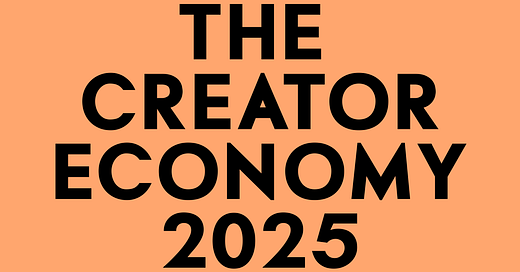



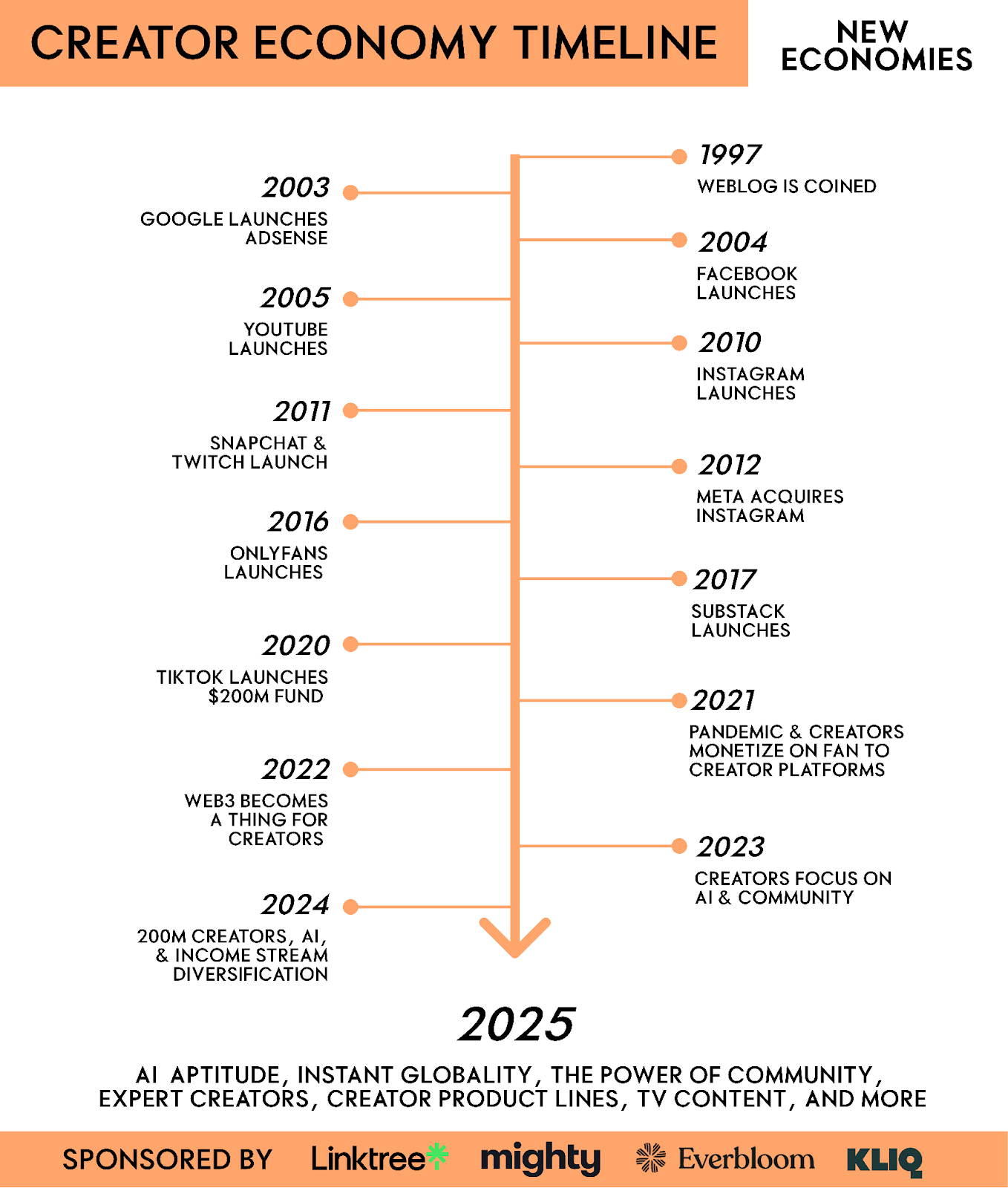
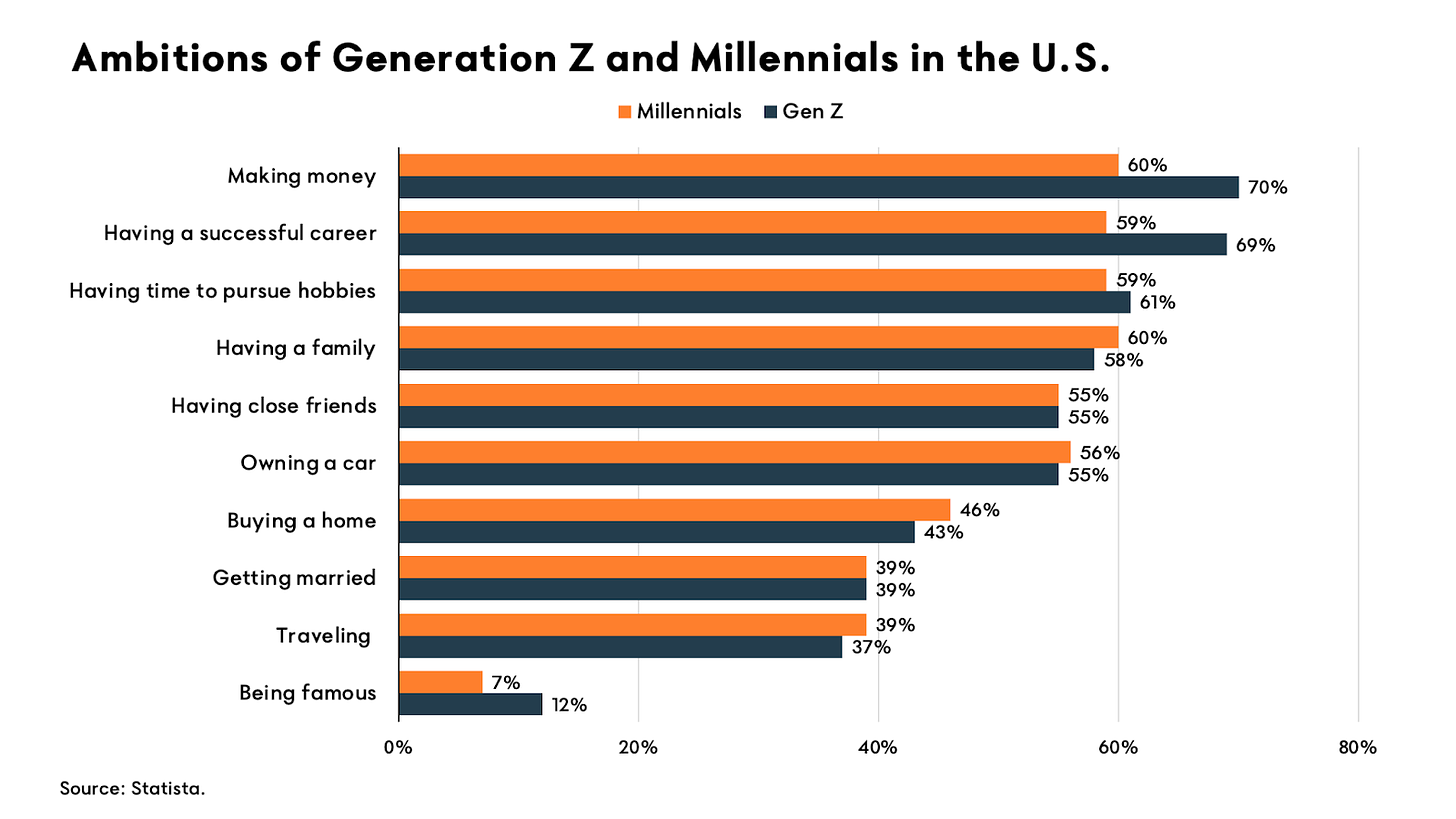
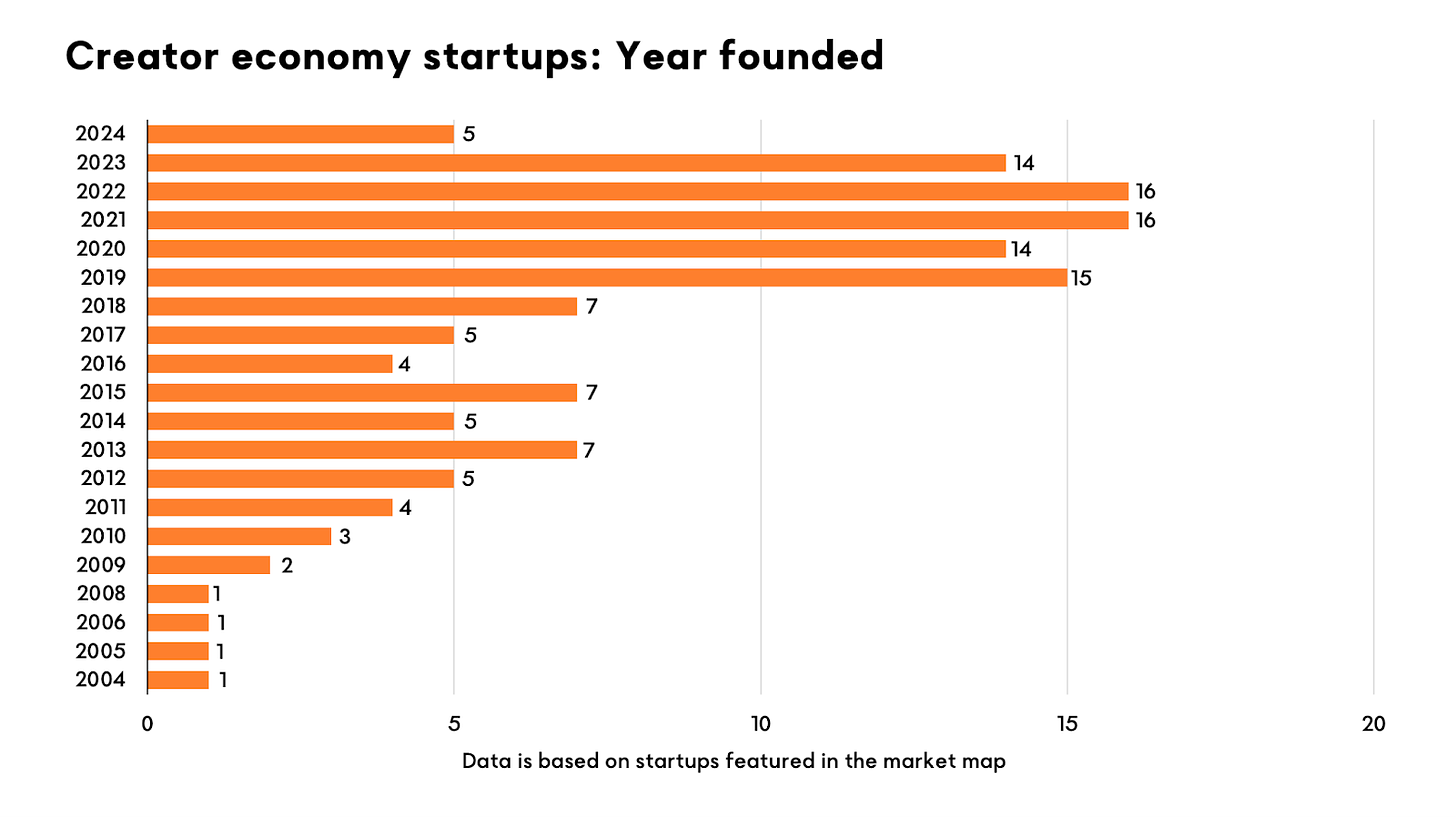
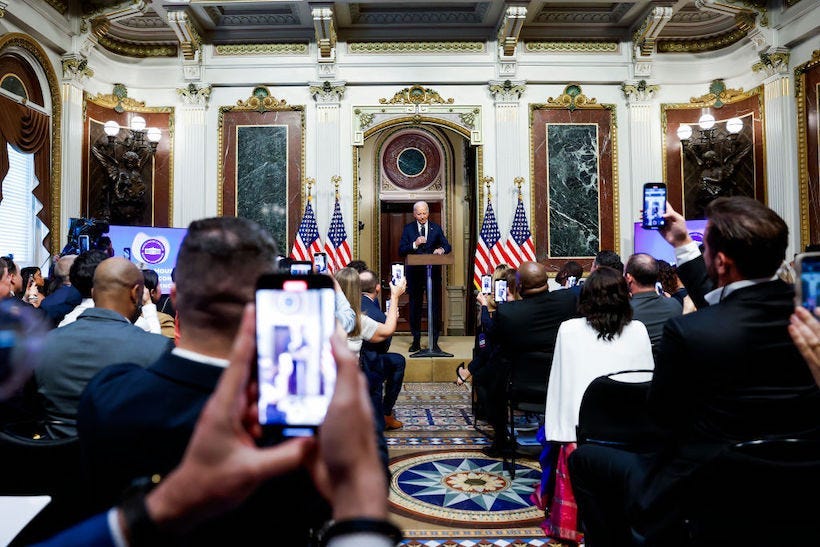
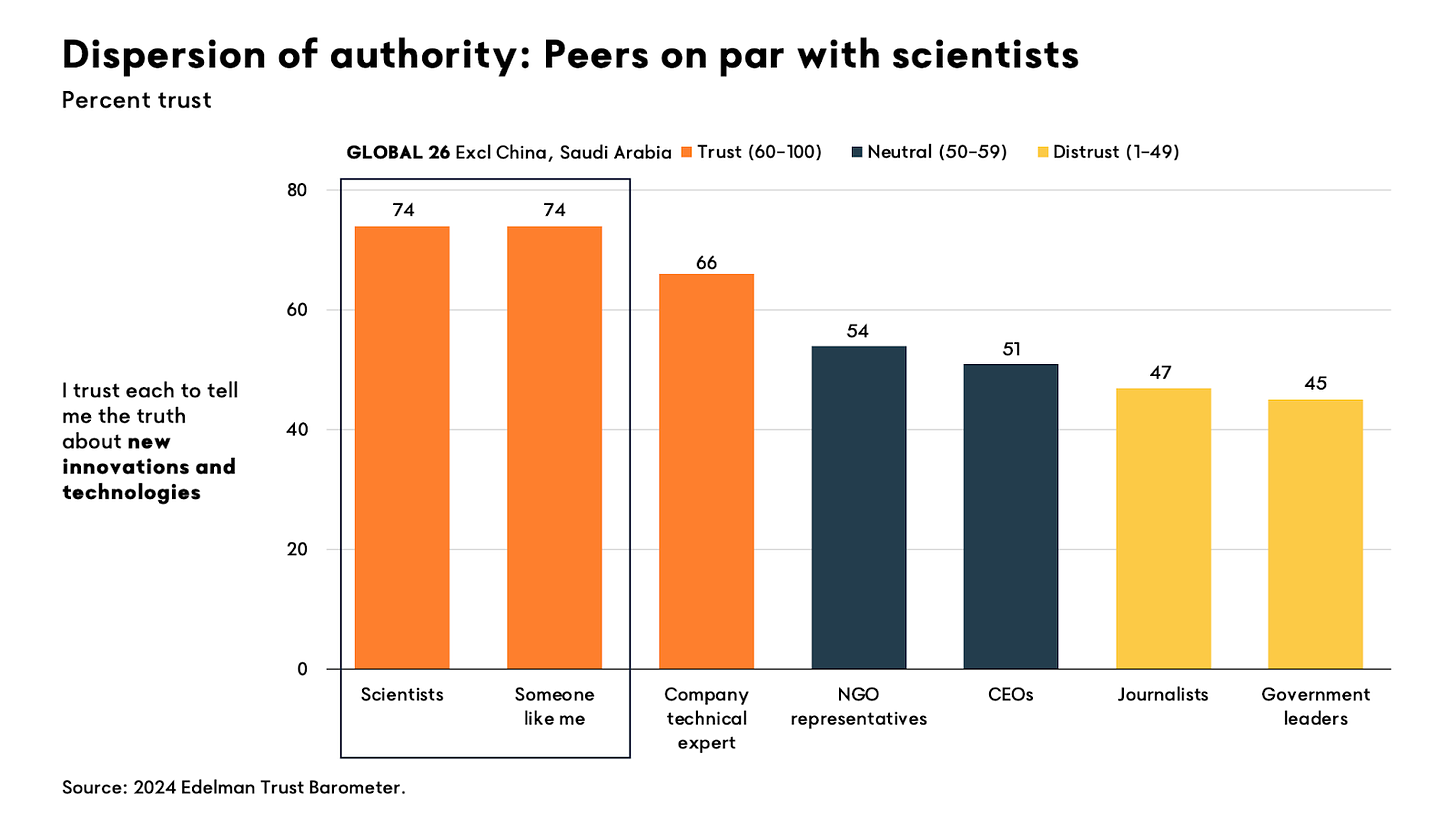

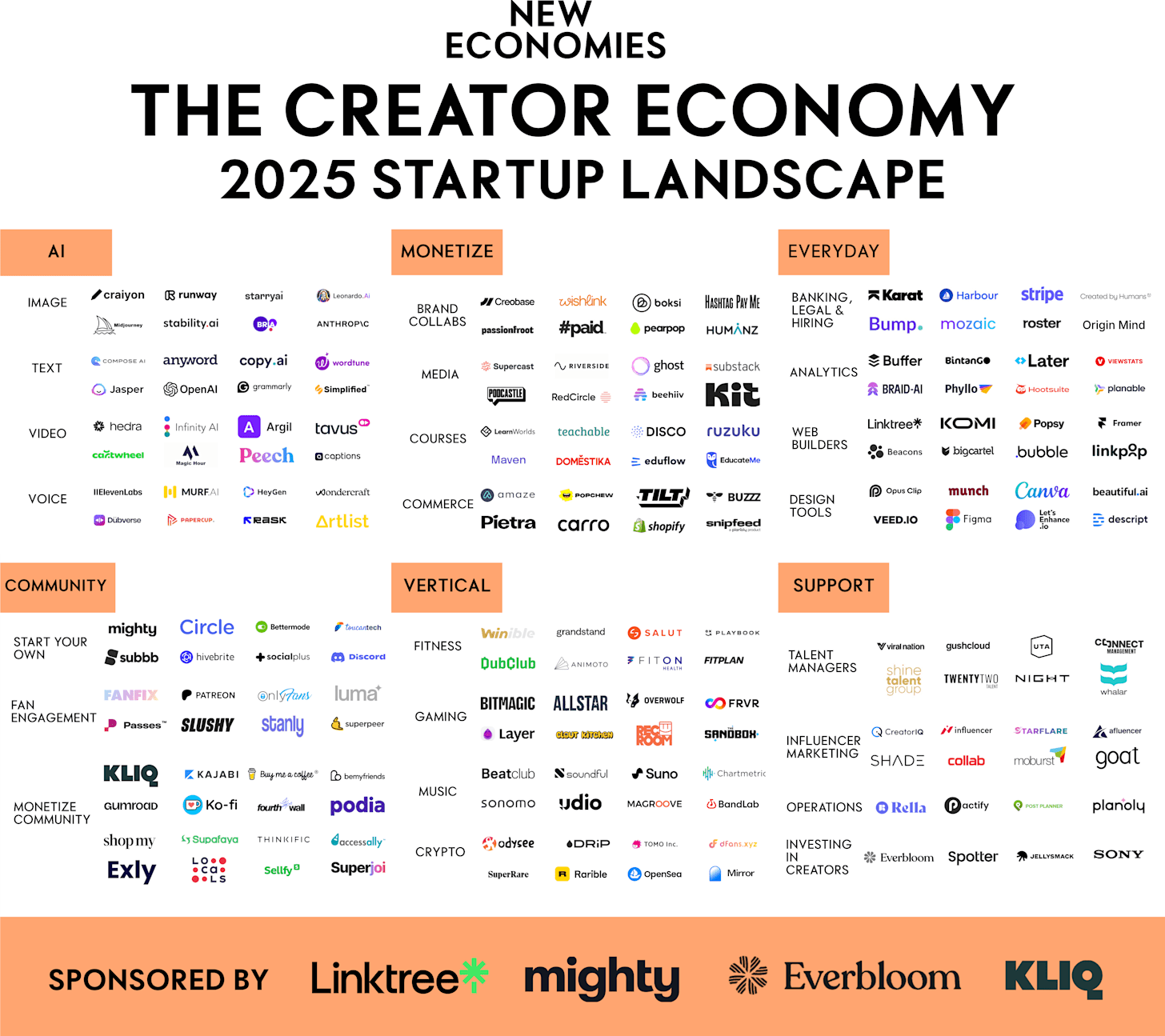
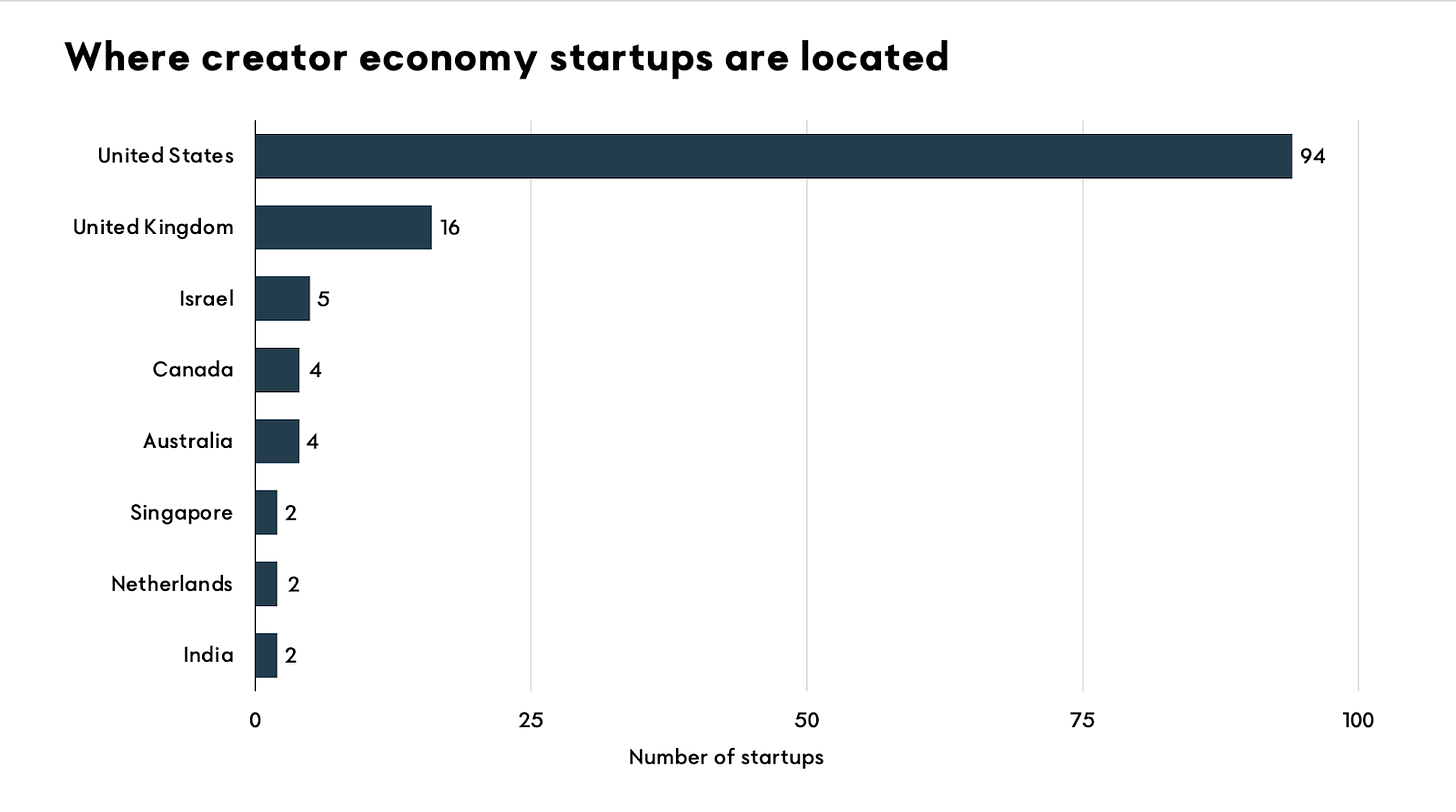
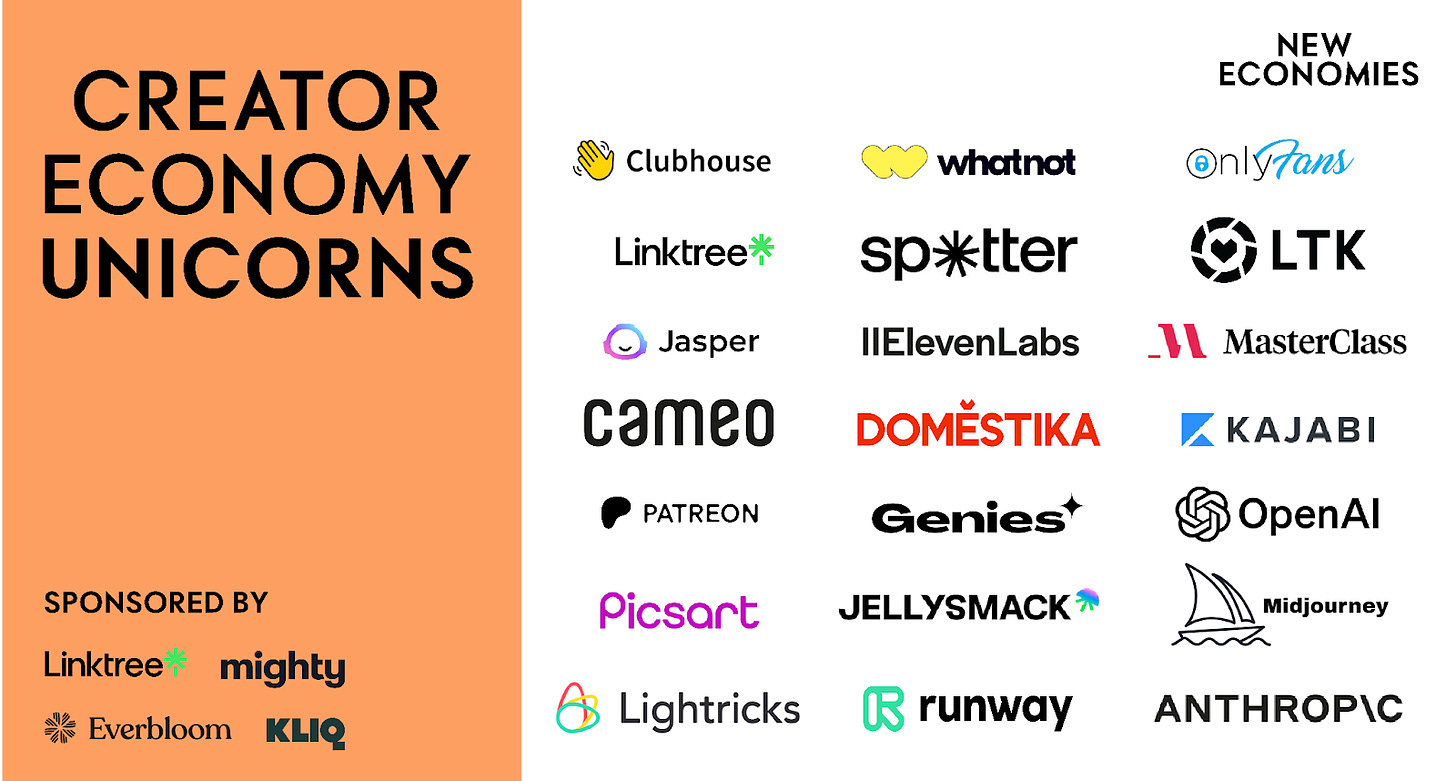
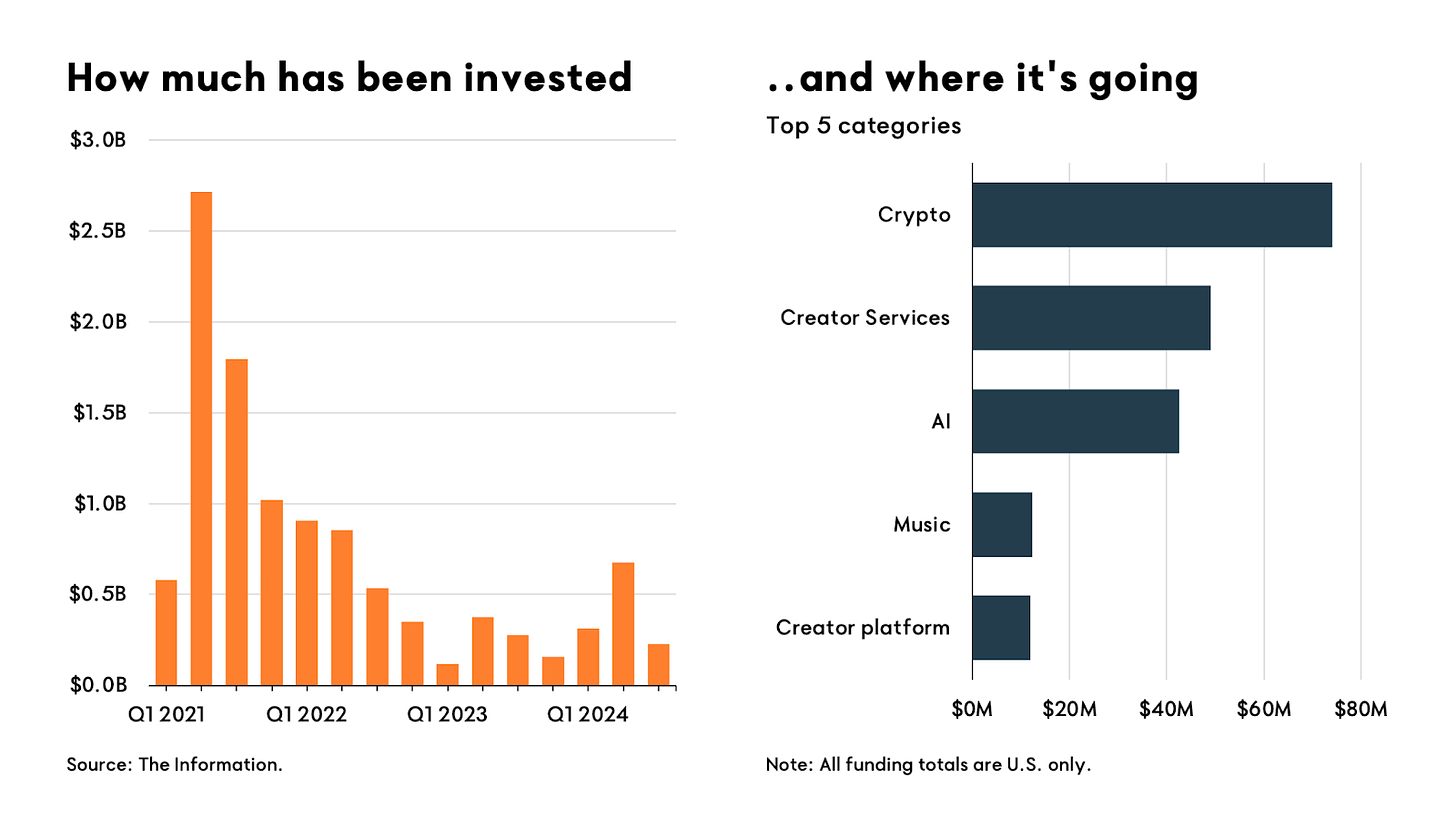
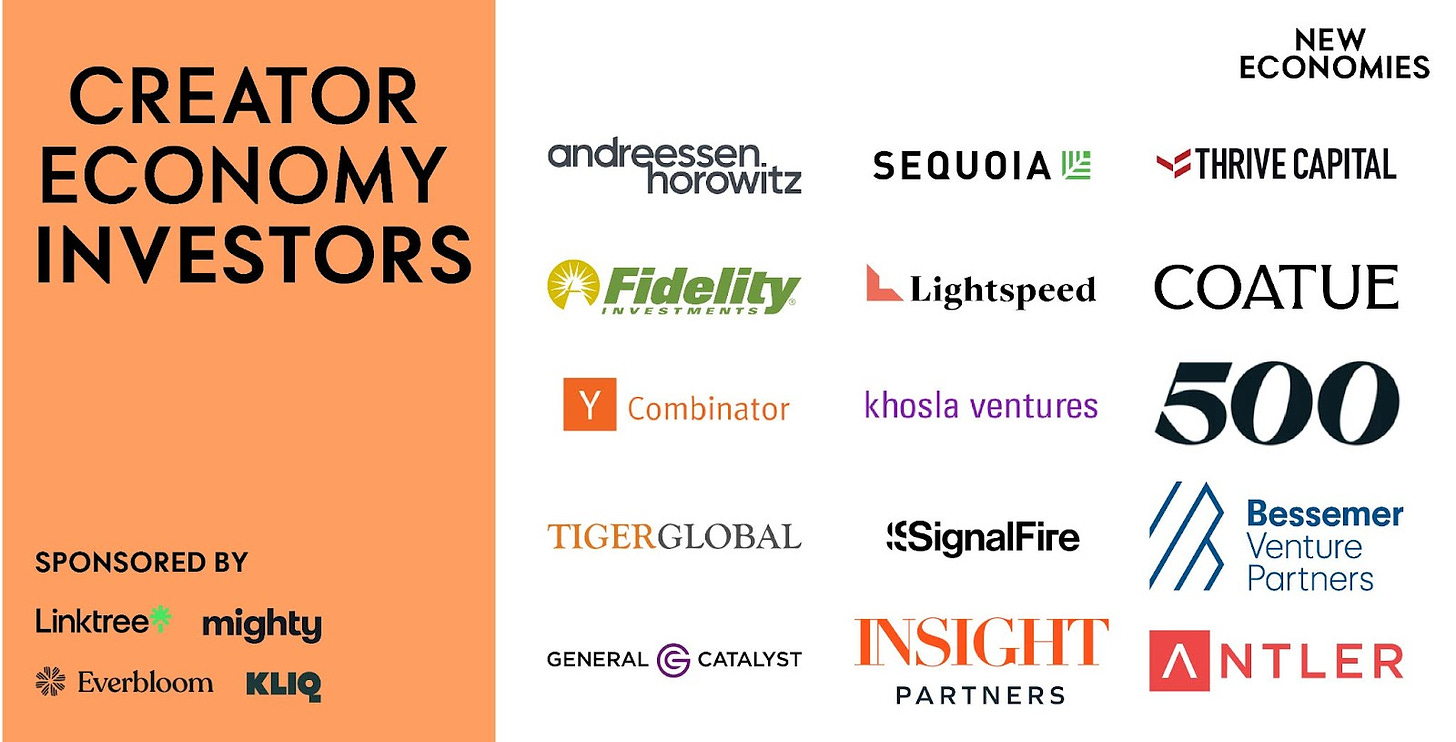

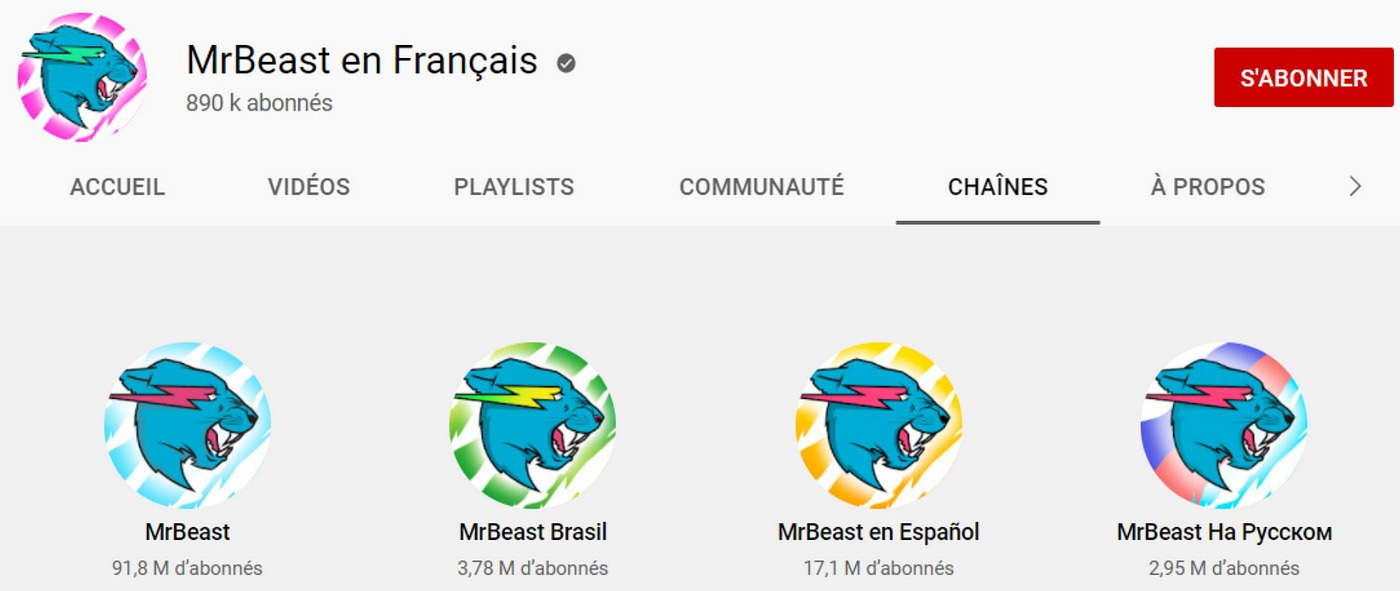




Thanks so much all for reading the report!
Great insights, just won a subscriber!